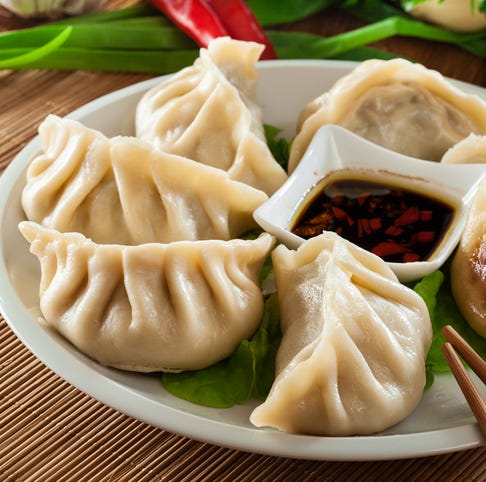| Minhae Shim Roth |
Dumplings
Known as mandoo in Korean, gyoza in Japanese, or jiǎozi in Mandarin Chinese, dumplings are versatile savory morsels served at many Lunar New Year celebrations. They can be filled with an infinite combination of fillings, including pork and chive, spinach and egg, and chicken and cabbage. Associated with currency, dumplings are said to bring prosperity and luck, so eat up!
RELATED: These Shortcut Shrimp Potstickers Are Made With Store-bought Dumpling Wrappers
Noodles
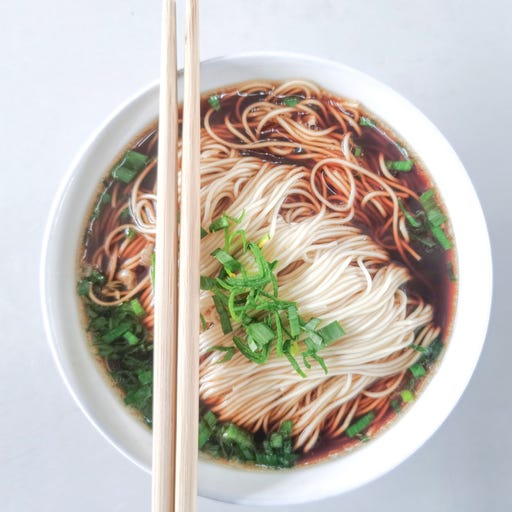
Known as “long-life noodles” or “longevity noodles,” and called chángshòu miàn in some parts of China, these noodles eaten on Lunar New Year can be as long as two feet and are served uncut, either fried or submerged in a broth. According to myth, the longer the noodle you eat, the longer you’ll live.
Advertisement – Continue Reading Below
Lion’s head pork meatballs

These pork meatballs are a common Chinese celebration dish with a unique name because their large, round shape resembles the head of a Chinese guardian dog, which are stone statues that symbolize protection and power. This holiday, serve these tender morsels on a bed of blanched baby bok choy for a dish that pairs comfort food with a fresh splash of greens.
Glutinous rice balls
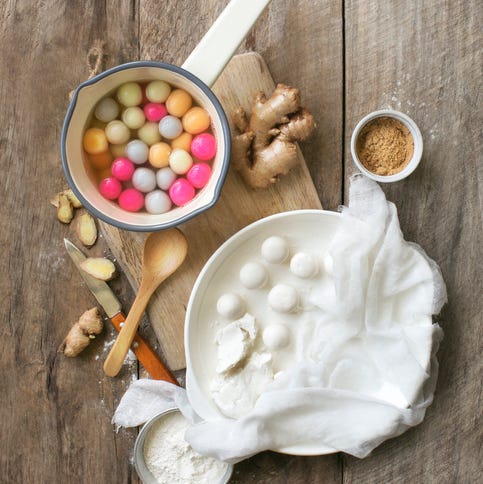
A popular Chinese treat for the holiday is glutinous rice balls, also called yuánxiāo or tāngyuán, that can be prepared sweet or savory. These round and chewy rice balls can be prepared with sweet fillings — like black sesame, peanuts, red bean, rose petals, and rock sugar — or savory ones like minced meat, crushed peanuts, and mushrooms. The round shape is said to symbolize family unity.
Advertisement – Continue Reading Below
Braised pork belly

A sumptuous dish that is served for special occasions, braised pork belly is a recipe popularly made with a red, sticky and sweet sauce in Shanghai. As an ingredient, pork belly is symbolic because the layers in the meat cut represent the year’s seasons and the continuous flow of both joyful and challenging times in the year.
Lumpia
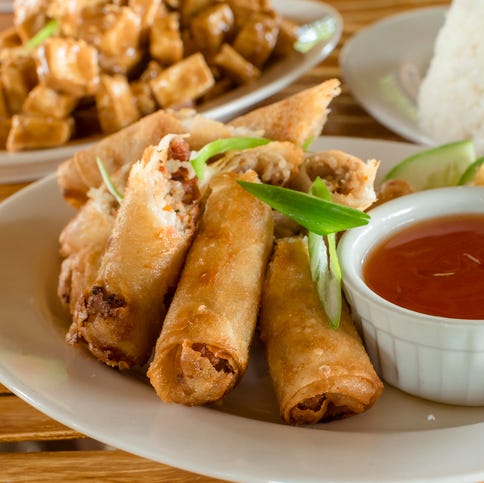
Similar to fried spring rolls found in Chinese cuisine, lumpia are a common Lunar New Year food served in the Philippines and Indonesia. Said to resemble gold bars, these fried rolls are often filled with one or more of chicken, garlic, pork, shrimp, carrots or bean sprouts, and considered lucky to eat during the holiday.
Advertisement – Continue Reading Below
Rice cake soup
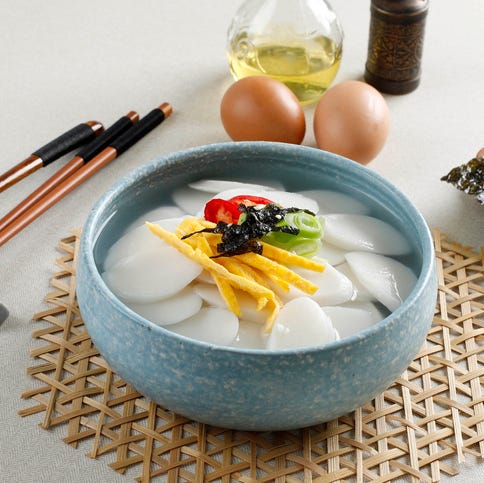
For Seollal, Korea’s Lunar New Year, people eat tteokguk, which is a rice cake soup made with water, beef, green onion, and egg. Centering thin white disk-shaped rice cakes that resemble coins, this soup symbolizes new beginnings and a clean slate that invites good luck. In Korea, when you eat a bowl of this comforting soup, they say you get one year older, wiser and richer.
Tangerines
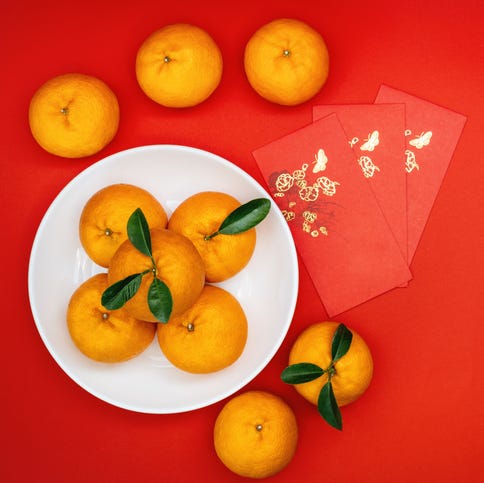
Refreshing, satisfying and symbolic, tangerines are a common gift and snack during Lunar New Year. Tangerines are considered lucky fruit because the Cantonese word for tangerine is similar to the word for wealth. In addition to tangerines, oranges, pomelos and kumquats are also common fruits considered to be lucky for the holiday because of their gold color.
Advertisement – Continue Reading Below
Whole Fish
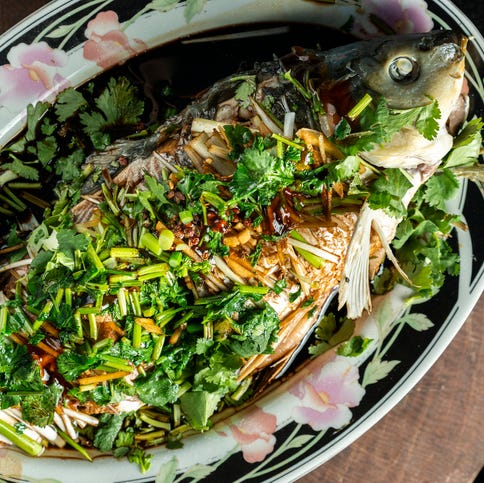
A common feature on many Lunar New Year menus, fish, especially when served whole, is said to represent wholeness, abundance, and prosperity for the coming year. Common whole fish dishes are black bass steamed with ginger and scallions, and sea bass, trout or carp braised in a spicy chile sauce.
Sesame balls
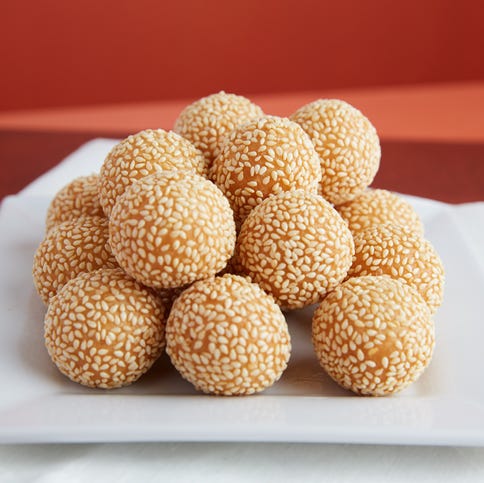
While sesame balls are found in Chinese bakeries and restaurants throughout the year, they take on a special meaning during Lunar New Year: that of expanding luck. Since the glutinous rice flour balls grow outwards while they are being fried, they symbolize your expanding fortune. Make sure to order a couple extra for yourself this year.
Advertisement – Continue Reading Below
Chinese New Year sticky rice cake
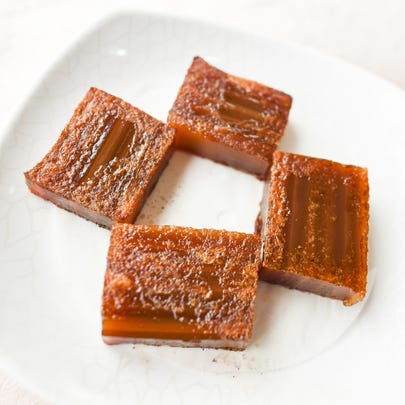
Sweet, supple and soft in texture, this cake, also known as nian gao, is a popular Chinese sweet dessert eaten during Lunar New Year. The cake is made of rice flour and brown sugar and can be eaten plain, dipped in condensed milk for an extra sweet kick or pan-fried for some crisp. These can be purchased in Asian grocery stores and make a great gift.
Almond cookies
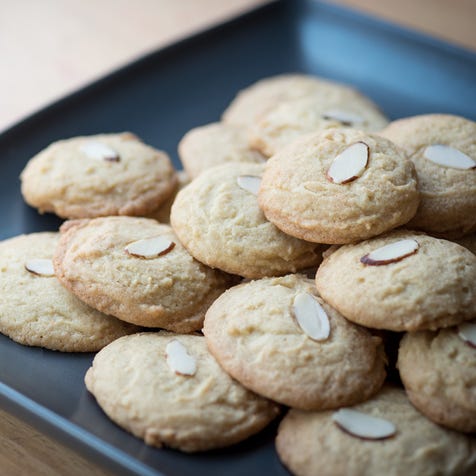
Round and golden when baked, almond cookies are said to resemble coins and symbolize good fortune and prosperity for the eater. Topped with a single almond that can be blanched or toasted, these cookies are a simple dessert to make and simply irresistible. Feel free to tuck in a few extra to boost your luck (and taste buds)!
Advertisement – Continue Reading Below
Buddha’s Delight
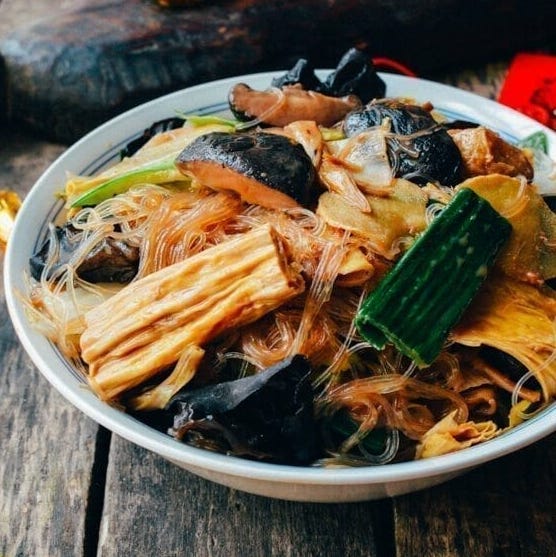
Traditionally eaten as a healthy mid-morning vegetarian meal on Chinese New Year day, Buddha’s delight is a great option for vegan guests. A common meal for Buddhist monks, this dish is considered a cleansing and compassionate meal that sets the tone for the new year. The recipe is versatile and can include many different plant-based ingredients, like black mushrooms, snow peas, tofu, water chestnuts, lotus root, ginkgo nuts and napa cabbage, all sauteed in a wok and served on a bed of rice. Try this recipe from The Woks of Life.

Advertisement – Continue Reading Below
Advertisement – Continue Reading Below
Advertisement – Continue Reading Below

